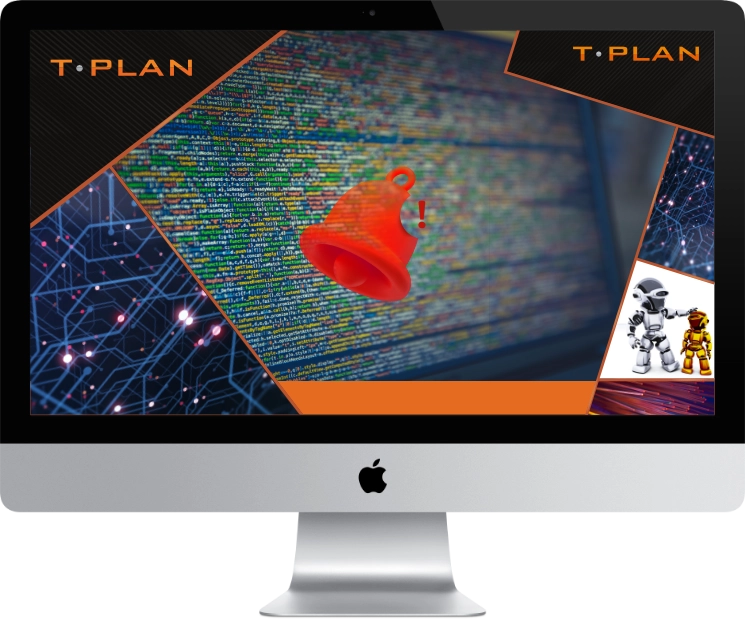
Ensuring a game or an application runs smoothly, without bugs and with high performance is essential; especially considering the competition out there in the market. Testing phases are therefore a crucial component of the software development cycle – yet it can be very costly, requiring resources including time and man-hours (e.g., professionals with specific technical programming skills). As software development accelerates, the need for an efficient and streamlined process is needed to make the testing procedure accurate, efficient, and cost-effective.
This is where codeless test automation comes in; it presents an approach that simplifies the creation, execution, and maintenance of automated tests, eliminating the need for coding and saving hours of time. By using intuitive visual workflows and user-friendly GUIs, codeless test automation tools allow teams to automate testing activities effortlessly.
Why codeless?
Codeless test automation removes the need for manual coding by leveraging visual workflows, graphical user interfaces (GUIs), and pre-built code blocks. Integrating a simplified interface allows team members of all backgrounds to get involved in the testing process. Transferring this responsibility to non-technical team members not only liberates precious time for your programmers, but also ensures the maintenance of accurate and high standards of testing.
How Does Codeless Testing Work?
As its name suggests, codeless testing eliminates the need for traditional coding. Instead, testers make use of visual interfaces or drag-and-drop tools to design test cases, combining various components to create a number of testing scenarios. Input data and expected outcomes are easily integrated into the testing platform, thereby streamlining the entire process.
As tests are executed, results are validated and reported, which allows testers to continuously refine and iterate their tests effortlessly. This methodology fosters rapid test creation, collaboration, and seamless integration with CI/CD pipelines, thus enhancing overall software quality and reliability.
Differences Between Low-Code, No-Code and Codeless Testing
Key distinctions between codeless automation, low-code, and no-code automation lie in the level of customisation and coding skills that are required:
| Automation Type | Coding Skills Required | Customization Level |
| Low-code | Some coding skills | Moderate |
| Codeless | Minimal coding skills | Moderate |
| No-code | No coding skills | Limited |
Codeless automated testing differs from traditional code-based automation in several ways:
1. Skillset: Codeless tools allow anyone to create tests visually without the need to code. On the other hand, code-based automation requires team members with strong coding knowledge.
2. Time: Codeless tools can save significant time on test case creation, whilst code-based automation generally takes longer to execute (approximately 6 hours per test).
3. Test Execution: Codeless tools handle test execution, while code-based automation requires configuring the environment for local or cloud execution.
4. Testing Types Supported: Codeless automation primarily supports functional and basic API testing, whereas code-based automation supports a wider range of testing types, including functional, API, load, mobile native, and desktop web testing.
T-Plan offers a comprehensive suite of features, including visual testing, playback and data recording, parameterization, and cross-platform testing support, making it a top choice for businesses seeking to streamline their testing processes.
Key Features of Codeless Test Automation Tools
Codeless automation testing tools offer a range of powerful features that streamline the testing process and enhance efficiency. These features include:
Visual Testing with Drag-and-Drop Interfaces: Rather than manual coding test scripts, testers can create tests visually by dragging and dropping elements onto a canvas. This approach simplifies manual testing and makes it accessible to non-technical users.
Playback and Data Recording: T-Plan test automation tool offers playback and data recording capabilities. This allows users to capture their interactions within the application and generate automated tests based on these recordings. This feature accelerates test creation and ensures accurate replication of user scenarios in continuous testing.
Parameterisation and Data-Driven Testing: Using an automation tool enables parameterisation of test inputs and support data-driven testing approaches without the need for coding. This feature enhances test coverage and facilitates the execution of tests with multiple data sets.
Cross-Platform Testing: T-Plan Codeless Test Automation supports testing across various platforms, including desktop applications, web, and mobile testing, ensuring comprehensive coverage.
Parallel Test Execution: The ability to execute testing and validation processes in parallel can significantly reduce overall execution time.
Robust Reporting and Analytics: A comprehensive reporting platform with access to various charts, plots, and visualizations is essential for quickly understanding the quality state of the application and analysing trends and test data. Advanced reporting features, such as screenshots, videos, and error traces, aid in debugging and analysis.
Disadvantages of Codeless Automated Testing
While codeless automated testing software’s are a convenient and cost-effective way to address the crucial testing phases in software development, they do have some limitations.
Dependency on codeless automated tool providers: Codeless automated testing tools strongly depend on the provider’s capabilities and features. This can lead to several problems, including the provider lacking the capacity to meet certain complicated test scenarios, or tying businesses to specific vendors. The latter problem may lead to a lack of extensibility and therefore limit the interactions with other testing frameworks.
Customization: Handling advanced testing scenarios may need more sophisticated adaptations with current automation frameworks, and this might not always be available. However, for most mobile game testing, this is likely not a major concern.
Limitations in coverage: Niche technologies may not be supported, and mastering advanced features requires time. Again – for mobile game testing, this is likely not an issue as most are developing for Android and iOS.
Choosing the Right Codeless Automation Tool
It’s crucial to carefully evaluate your organisation’s specific needs, including the types of applications to be tested, the platforms and technologies involved, the team’s skills, and the budget, to ensure you choose the right codeless automation tool for your testing requirements.
T-Plan offers a suite of solutions that redefine UI testing. With unmatched flexibility and intuitive design, T-Plan empowers organizations to navigate digital transformation with confidence and efficiency.
Why you should consider using T-Plan for codeless test automation
Flexibility: T-Plan offers unparalleled flexibility, catering to the unique needs of organizations regardless of size or industry.
Ease of Use: With an intuitive user interface, T-Plan requires no coding expertise, enabling users of all technical backgrounds to contribute to testing efforts.
Compatibility: T-Plan seamlessly integrates across all devices and operating systems, ensuring versatility and adaptability in any environment.
Time and Cost Savings: By automating repetitive tasks, T-Plan delivers substantial time and cost savings, enhancing efficiency across departments.
Comprehensive UI Testing: T-Plan enables end-to-end testing across any device, browser, or technology, ensuring thorough UI testing with record and playback functionality.
Innovative Features: External data integration and image-based testing simulate true “end-user” experiences, enhancing the accuracy and effectiveness of testing.
Robust Support: T-Plan offers extensive training, live chat support, and frequent updates, ensuring users have the guidance and resources needed for success.
Additionally, when selecting a codeless testing solution, key considerations include future-focused AI capabilities, robust analytics and reporting features, and an all-in-one platform approach.
Frequently asked questions about codeless test automation
How do codeless testing tools like T-Plan integrate AI capabilities to enhance testing accuracy?
Codeless testing tools can leverage AI capabilities to enhance testing accuracy in a few ways – primarily by employing intelligent test generation to automatically create test cases based on application behaviour, self-healing mechanisms to adapt test scripts based on changes in the application’s UI and predictive analytics to prioritise test cases for maximum defect detection.
Additionally natural language processing can simplify test creation by translating plain language descriptions into automated test scripts, while image recognition technology can help enable precise interaction with UI elements. By integrating AI codeless testing tools streamline testing processes, improve accuracy and optimise resource utilisation which ultimately enhances overall software quality.
In which specific scenarios would it be advantageous to use code-based automation over codeless alternatives?
If you have more complex or specialised testing requirements this is where you may want to consider a code-based automation instead. For example – were you testing a mobile strategy game where AI-based opponents adapt their tactics based on player actions, code-based automation would be more advantageous because you would be able to customise and fine-tune the AI behaviour based on your player’s actions by modifying the underlying code. You can implement complex decision-making logic and validate the realism of the AI opponents more effectively than with codeless alternatives.
Additionally if your project requires extensive integration with existing codebases, or where performance testing across multiple platforms is important, code-based automation does offer greater flexibility and capability.
What level of customer support is typically provided by T-Plan?
We offer a highly comprehensive level of customer support which usually extends to technical assistance for installing and troubleshooting, training resources for onboarding, regular maintenance updates, consultation services for test strategy and dedicated account managers for personalised assistance. This ensures you can effectively use the tool’s features, optimise testing processes and address any challenges effectively.


